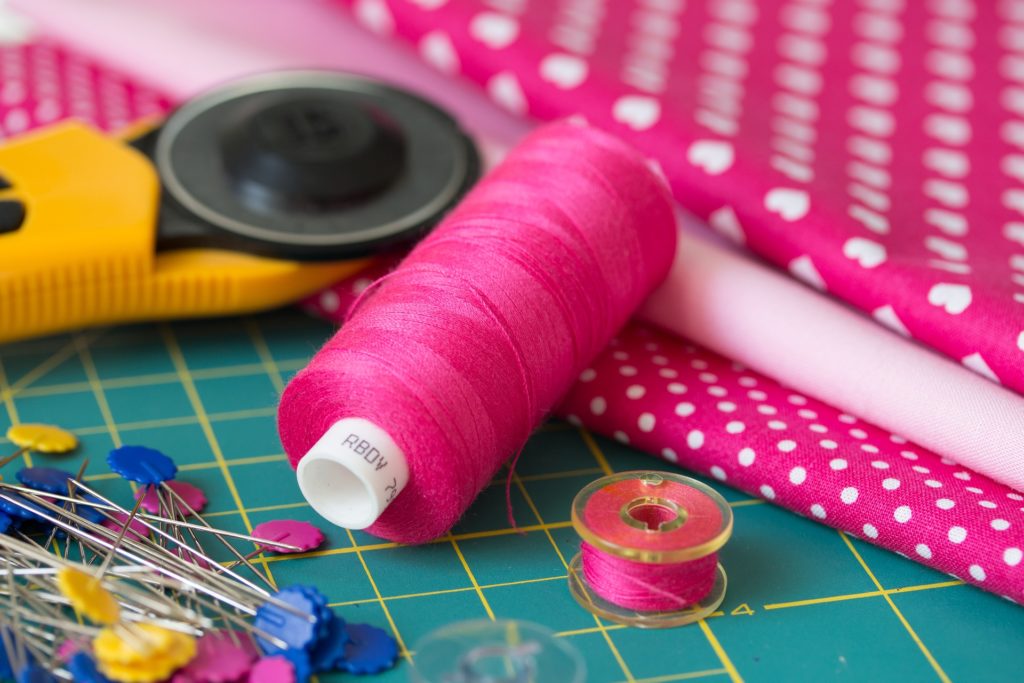An overlocking machine (or serger) will help you take your sewing skills to the next level. An overlocker does not replace your sewing machine; rather, it works as a beautiful addition to your existing machine and allows you to take on larger and more complicated projects.
The ultimate purpose of a serger is to neaten the fabric edges of cut-outs before you start sewing. This is also known as finishing the edges. An overlocking machine cannot perform regular sewing machine tasks, such as doing buttonholes and zippers. However, there are various models on offer with several different attributes and features. This means you need to consider your buying decision very carefully.

Should you buy an overlocker? Here are the top things to know before your purchase.
Threading System – Is the Overlocker Easy to Thread?
You should know that it is not easy to thread an overlocker in the beginning. Think of the first time you tried threading your sewing machine. Was it simple then? You probably get the job done within a split second now, however. A quick search of YouTube or Google can give you ample instructions.
In the end, some machines are just easier to thread than the rest. For instance, models that come with the advanced ‘Jet Air’ stream threading systems will literally blow the thread where you want it to go. This is highly beneficial when you don’t want to be stuck threading your machine.
You don’t necessarily need to purchase an expensive machine if your budget won’t allow it. There are a few sneaky methods, such as the ‘tie-on’ method that will help you complete the job quickly on your budget machine. You don’t use the thread completely, instead tie news ones to the old one to avoid rethreading.
Separate Stitching Options
You may want to make sure the overlocker has what it takes to help you with your routine sewing tasks and others. For instance, many people sew knits. In this case, you may want an overlocker that can create a coverstitch. This way you won’t need to purchase a separate coverstitch machine. Keep in mind the typical projects you’ll be taking on and be sure the overlocker can perform the stitches you require most.
Adjustable Differential Feed
An adjustable differential feed is vital to any brand-new full-size overlocker, especially if it has a 4-thread count. You want to make sure this is true for second-hand models as well. Adjustable differential feed basically means that the underlying two feed dogs work independently of each other.
This allows you to achieve or avoid fluted, wavy, or bunched edges. You can use the adjustable differential feed to play around with the feed for creating ruffles or gatherings without having messy edges in one slick action. If you want to go pro – you need an adjustable differential feed in your overlocker.
Tension Control – Manual or Automatic
You will get better results when you have more control over the thread tension. Many people prefer purchasing overlockers with automatic tension control. Modern machines make use of ‘lay in’ tension which controls the thread tension from the inside rather than by using outside knobs. These knobs need to be turned manually and can disrupt your work.
Lay-in tension models may still come with dials that need to be turned, so check the machine before you buy it. Some overlockers also offer self-adjusting, fully automatic tension control to give you even, clean and neat stitches regardless of the fabric you choose. You should remember though that the more automated the machine, the more expensive it gets.
Tension controls can help you create beautiful rolled hems, especially on eveningwear and lightweight fabrics. It helps in forcing the hem edges under the overlocker as it finishes the edges. This way you create a neat and subtle finish without having to mess with any knobs.
Stay Away from Extra Feet, Accessories and Freebies
Everyone likes freebies, but don’t allow these gimmicks to influence your buy. Accessories can always be purchased later. You should focus on the important and necessary features. Many people prefer an extra foot, since it can be used for blind stitching, gathering, cording, shirring, and attaching elastic among other things. However, you can always purchase additional feet separately.
Look Beyond the Price
As mentioned earlier, overlockers may appear expensive initially. However, they are worth every bit of the investment. You get exactly what you pay for, so you need to purchase a machine based on the above-mentioned factors instead of the price. Overlockers tend to look the same on the outside. However, the difference between high-end and low-end machines becomes obvious on the inside.
If you have a sewing machine, you already know that the material internal components are made of and play a major role in the machine’s functioning, durability, and efficiency. Most low-end machines contain cheap plastic components. These usually snap or simply wear out when placed under stress.
Any overlocker technician you take the machine to will be telling the truth when they say that it will probably be cheaper to just get a new machine than have it fixed. Higher end machines may seem expensive initially, but they usually consist of metal parts. These parts can bear extensive stress that usually accompanies overlocking work.
You can tell if a machine has metal parts from lifting it. If it feels heavy then you have a winner on your hands. These machines have the power and drive to work through all types of fabrics from velvets to denim.

Leave A Comment